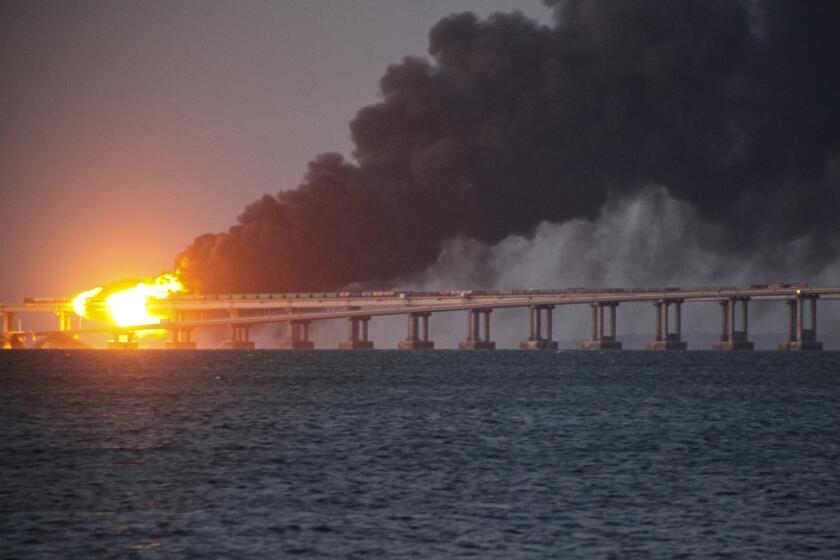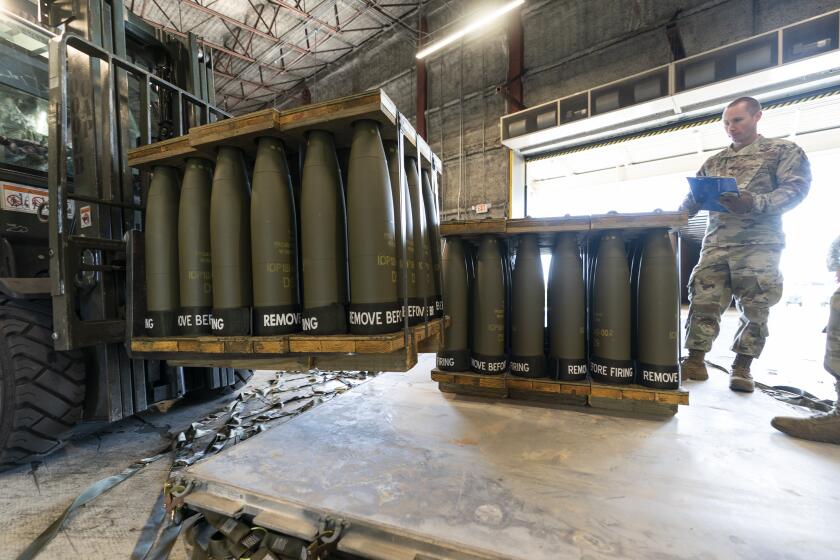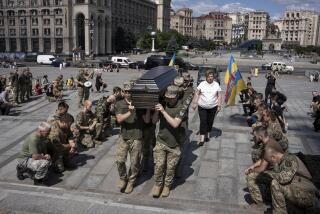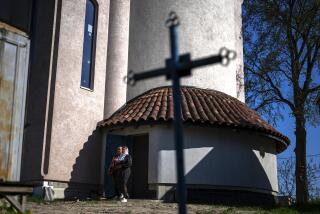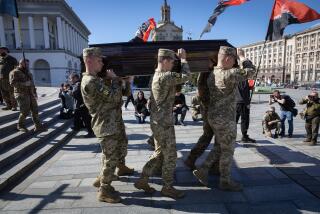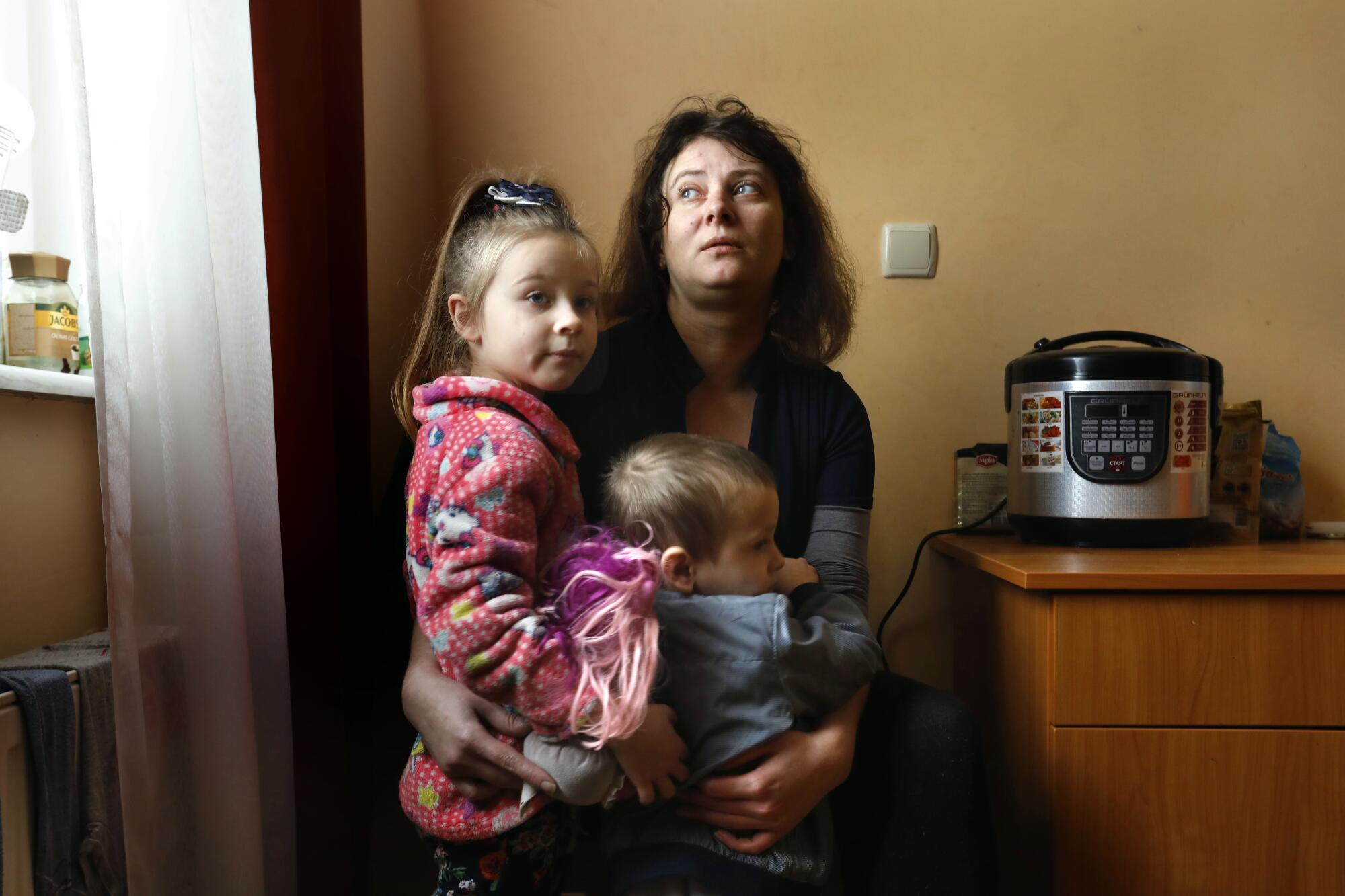
LVIV, Ukraine — For one exhausted, bedraggled Ukrainian woman — driven from her home by Russian bombs, her soldier husband in peril on the war’s front lines — safe haven seemed at hand when her early-morning train screeched into the majestic but freezing Art Nouveau railway station in Lviv, the country’s westernmost big city, a few days ago.
It was not to be. The middle-aged teacher was told, kindly but firmly, that there was no available spot in any of the shelters for displaced people and that she should keep heading west, out of Ukraine.
“When we said we could not find a place for her here, she cried and cried and cried,” said Hanna Bystrytska, a 27-year-old volunteer greeting arrivals at the rail station. “She said she couldn’t bear to leave Ukraine while her husband was serving at the front. But in the end, that was what she had to do.”
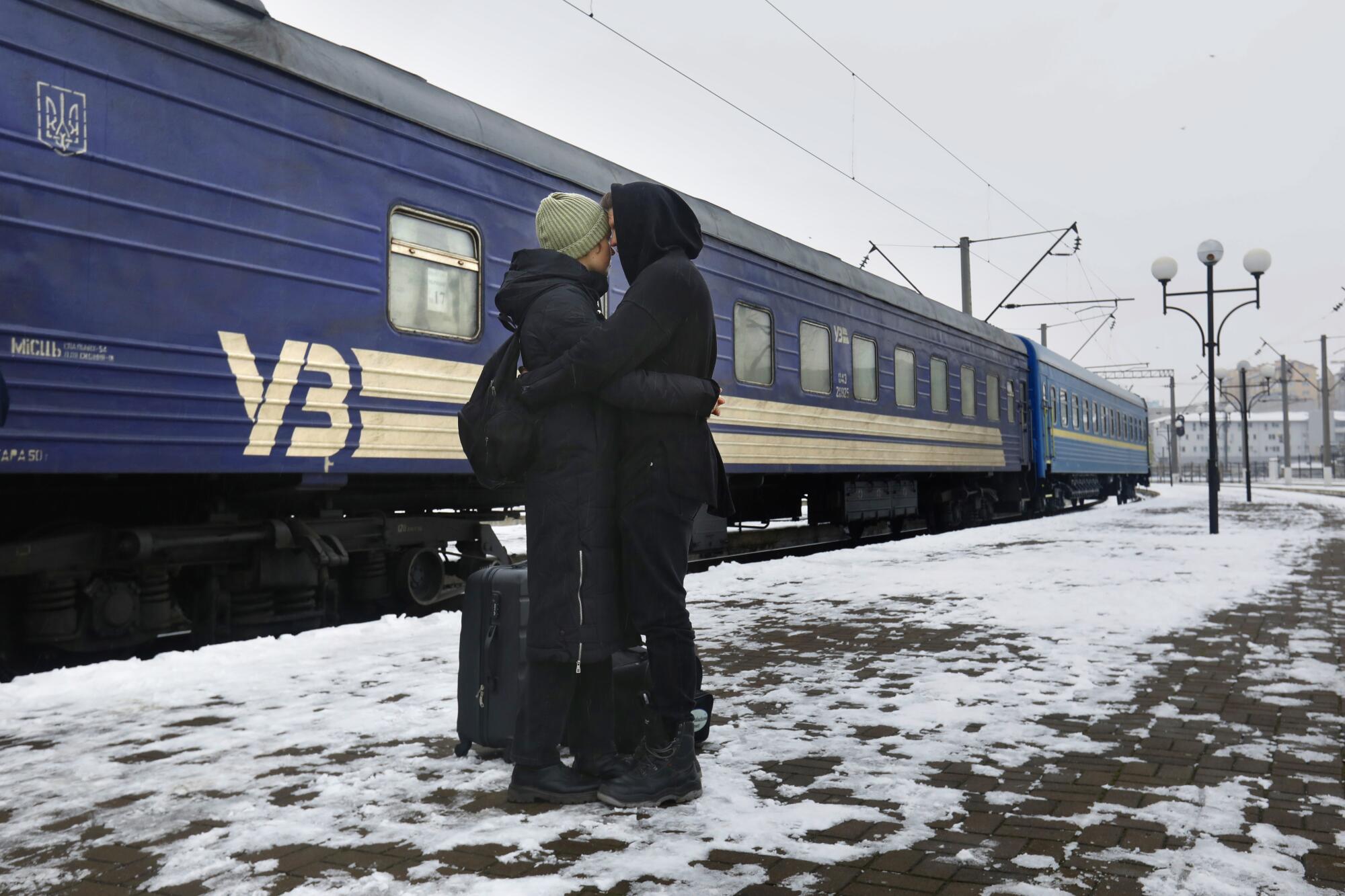
As the weather’s bite sharpens, Ukrainians fleeing bombardment, cold and privation in the country’s battle zones are finding that areas once considered prime places of refuge — those nearest the Polish border and NATO territory — are suffering as well, staggering under the weight of caring for displaced people and blackouts triggered by a broadened Russian aerial offensive.
“We want to help every-one,” Bystrytska said. “But we are drowning too.”
Throughout nine months of war, Lviv, an architectural gem with a prewar population of about 750,000, has served as a crucial humanitarian hub for those forced to abandon homes else-
where. From battle-devastated villages, towns and cities along a ragged arc of front line that curves from southeast to northeast, the exodus has grown to biblical proportions.
By United Nations estimates, some 6.5 million people are displaced within the country, in addition to nearly 8 million who have left Ukraine altogether.
The latest wave of displacement has come from areas in and near Kherson, a strategic provincial capital in the south that was recaptured by Ukraine from Russian forces two weeks ago. Within days of changing hands, it came under fierce fire from just across the Dnieper River, where Moscow’s troops sought to establish a new front line.
Ukraine sees Crimea, the strategic peninsula illegally annexed by Russia nearly nine years ago, as potentially within its grasp.
More than 30 civilians were killed last week in Kherson, and dozens more injured, in what Ukrainian officials described as revenge attacks. Even before the shelling commenced, humanitarian conditions in the city were desperate, in large measure because retreating Russians destroyed as much energy infrastructure as they could.
Ukrainian officials said Saturday that they had begun resupplying Kherson with electricity, but the situation was deemed dire enough that city residents were urged to leave voluntarily if they could, and hospital patients were being moved to safer areas.
Many of the country’s displaced want to remain in Lviv or its environs, as a last-chance means of staying rooted in their homeland, rather than heading into uncertain exile.
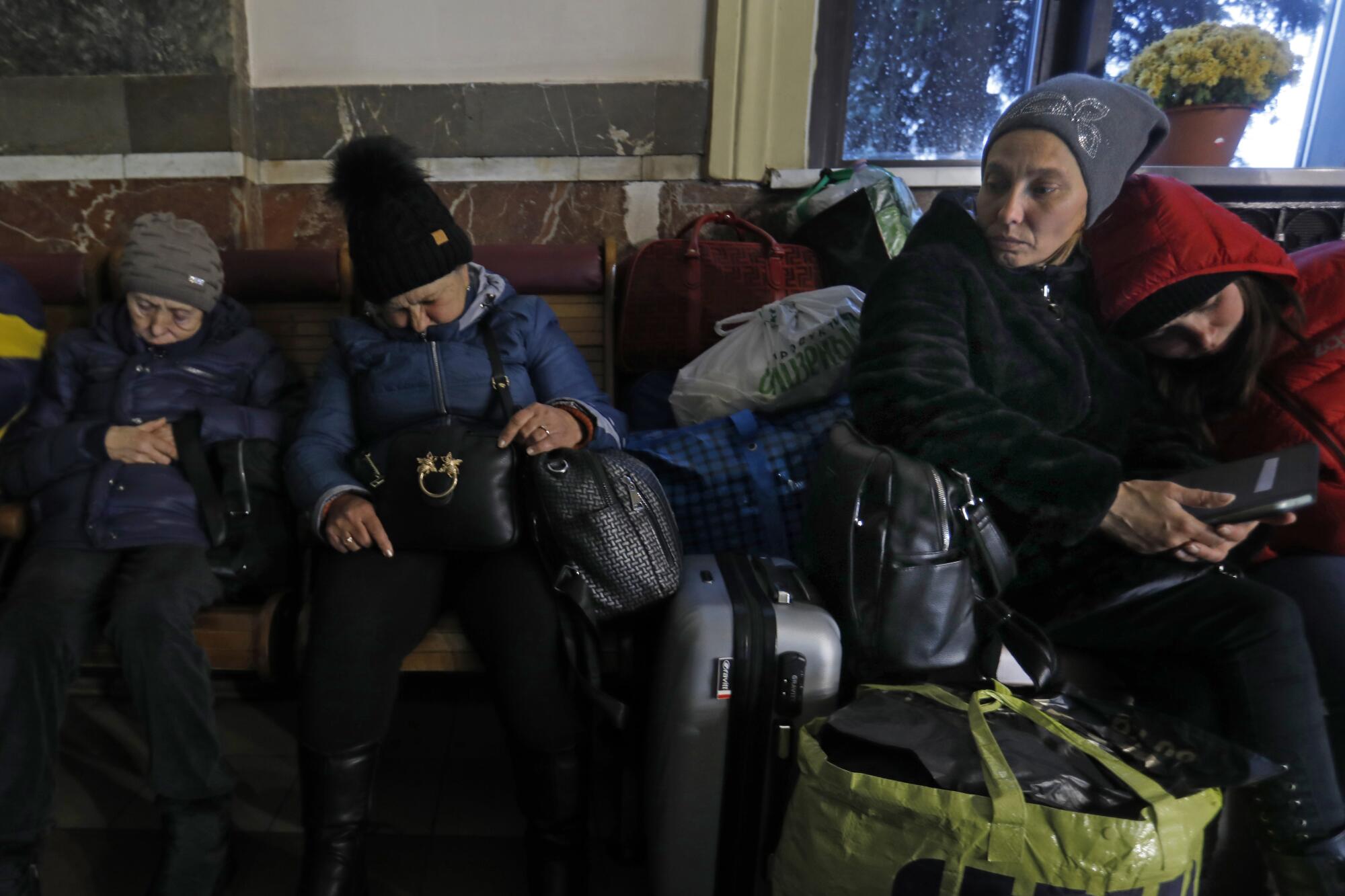
But as bitter, below-freezing temperatures set in and snow blankets the city’s picturesque streets and squares, some new arrivals are having to recalibrate those hopes. Last week, after one of the most punishing Russian barrages of the war triggered power outages in virtually every corner of the country, Lviv too was plunged into darkness.
“The whole city is with-out light,” Mayor Andriy Sadovyi wrote Wednesday on Twitter.
Emergency repairs quickly restored more than half the generating capacity, although light, heat and running water remained sharply curtailed by con-trolled blackouts meant to protect the badly damaged nationwide grid. Provincial Gov. Maksym Kozytsky said during a news briefing Thursday that fewer than one-third of customers in the Lviv region could have access to electricity at the same time.
Ukrainian officials say Russia’s strategy of targeting civilian infrastructure — which it has done since the Feb. 24 invasion, but with a cruelly laser-like focus over the last six weeks — is a deliberate effort to demoralize the country’s people by ramping up hardship, especially in places like the capital, Kyiv, where some semblance of normality had returned over the late summer and autumn.
An arresting NASA composite satellite image of nighttime Europe this month showed Ukraine as a largely blackened expanse, with only pinpricks of light emanating from a few major cities, including Kyiv and Lviv.
In his nightly address to compatriots Thursday, Ukrainian President Volodymyr Zelensky denounced deadly Russian strikes whose victims in recent days included a newborn boy. The effort to destroy power infrastructure, he said, was a futile attempt to assert the dominance that Moscow’s forces have failed to achieve on the battlefield.
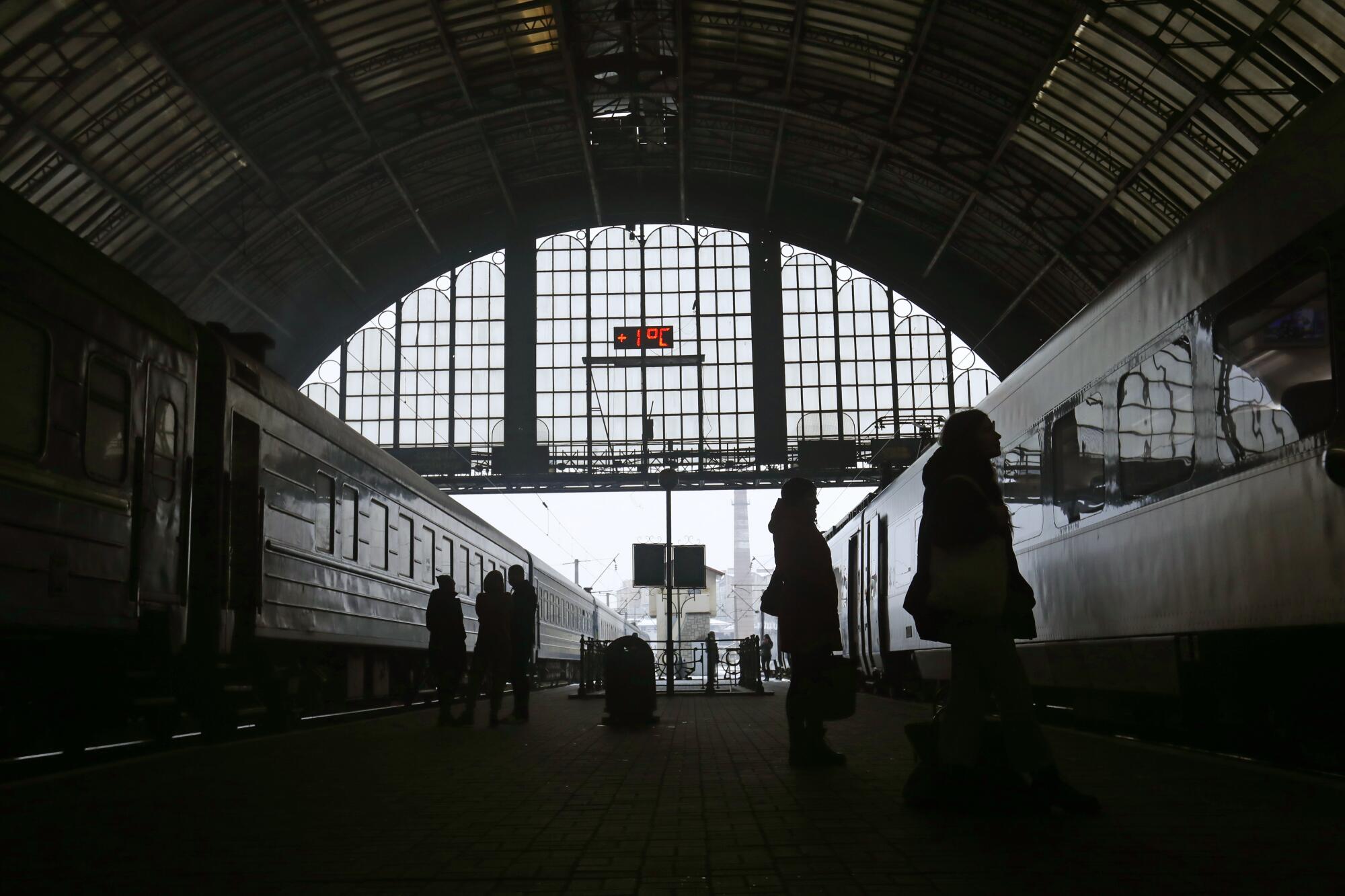
“They do not know how to fight,” Zelensky said. “The only thing they can still do is terrorize. Either energy terror, or artillery terror, or missile terror — that’s all that Russia has degraded to under its current leaders.”
The Kremlin has simultaneously denied aiming at civilian power installations and insisted that they are legitimate military targets.
As fighting drags on, municipal and provincial governments in the Lviv region have been working hard to accommodate hundreds of thousands of people seeking shelter, opening permanent housing to supplement makeshift quarters hastily pressed into use at the war’s start, such as schools and sports stadiums.
The United States is sending an additional $400 million in ammunition and generators to Ukraine, the White House announced Wednesday.
Priority goes to women traveling with young children or who are pregnant, or both. Those who arrive alone, like the teacher in her late 40s who came from Kherson, are generally told that safe, warm space is at too much of a premium.
At a hotel-turned-shelter about 10 miles outside Lviv, proprietor Yaroslav Gornii said he had room for about 15 more displaced people, in addition to the two dozen already in residence. But the power supply was too precarious to take in anyone else, he said, even with hours-long planned outages meant to ease demand.
“We can’t heat all these rooms,” said Gornii.
Together with their eight children, Olena Chkhvan, 30, and her 36-year-old husband, Oleksander, fled their home in the much-bombed southern city of Nikopol in midsummer. The family now shares two government-paid rooms in Gornii’s hotel.
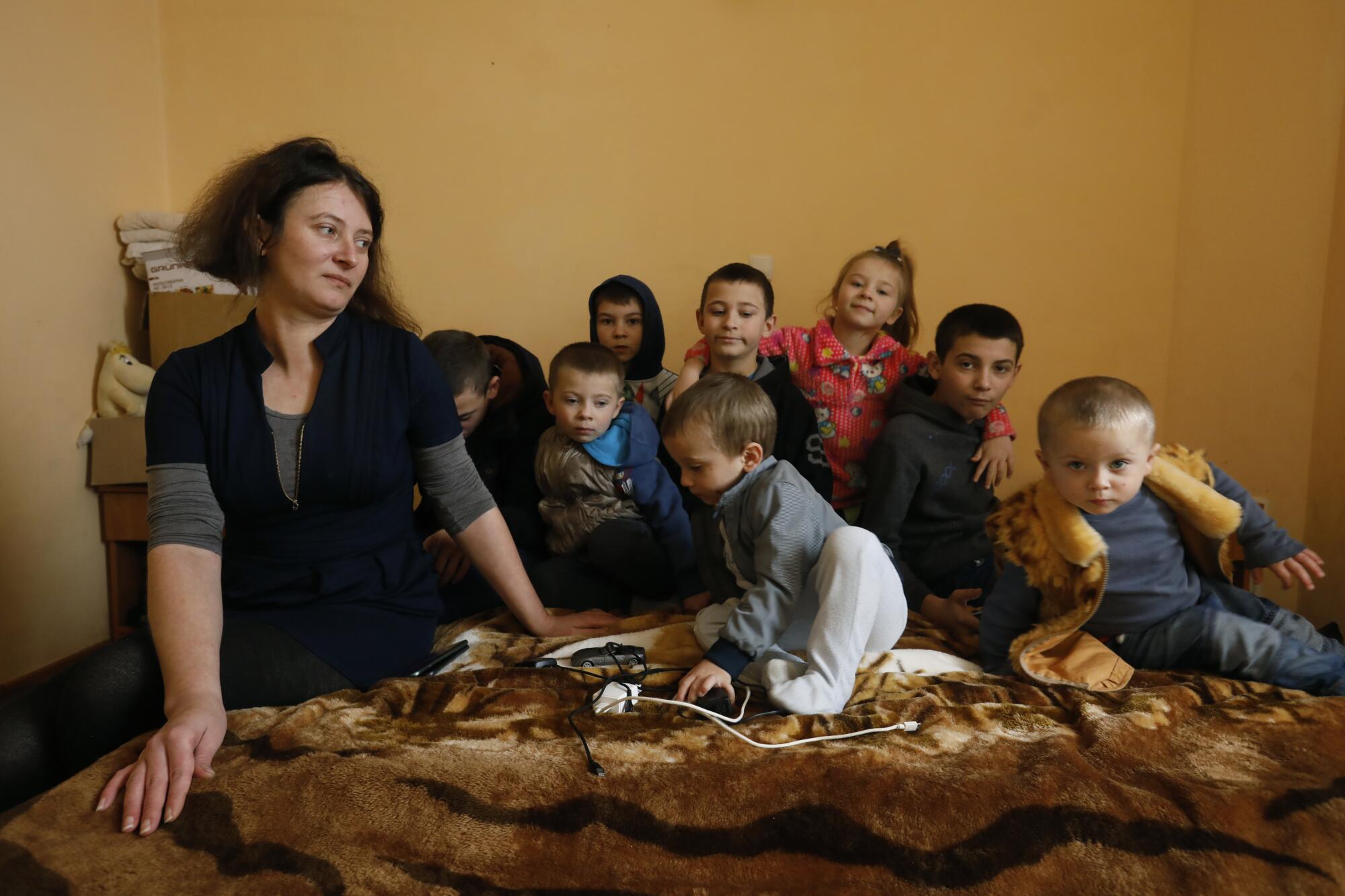
When they first got to Lviv, they lived for a month in a partitioned space in a sports arena, where the children, ranging in age from 3-year-old twins to a 14-year-old boy, slept on the floor.
“The hotel is much better,” said Olena. “Now the kids have beds.”
Lviv is showing some signs of social distress, brought on by the crush of arrivals and the stress of war. At relief tents, inebriated men sometimes join soup lines alongside mothers and children. Ukraine’s first lady, Olena Zelenska, wrote on social media over the weekend that ongoing problems such as domestic violence still need addressing, even as attention is captured by the country’s existential struggle.
Still, Lviv gives off an air of solidarity amid difficulty and deprivation. One evening last week, freezing rain pelted down before turning to snow, coating darkened streets in slick slush. In the broad promenade facing the ornate 19th century Lviv Opera house — usually a beacon of light, now visible only as a dim bulk — a white-haired man in a long overcoat slipped and fell hard on one elbow.
Passersby rushed to help, including a young couple whose own feet nearly went out from under them before they were able to get the man on his feet and pluck his spectacles from the slush.
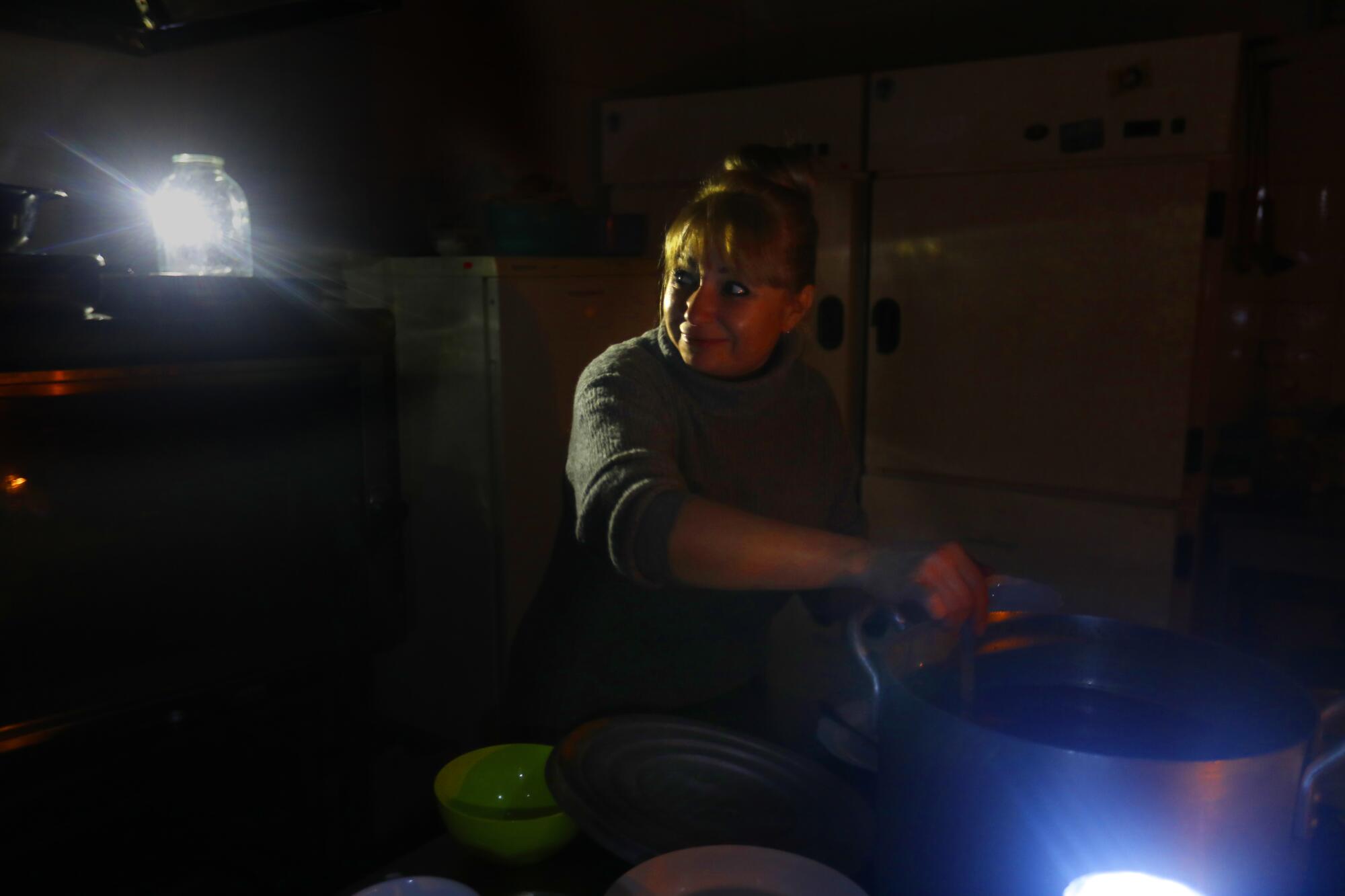
On Saturday, just as displaced people were sitting down to lunch in the basement of another converted hotel, the lights went out. In the kitchen, lighted by flickering candles, volunteer cook Nataliya Bautina, who fled the eastern city of Donetsk with her husband and parents, kept serving bowls of steaming borscht.
“We feel safe here, and people are kind to us — the times require everyone to help,” said Bautina, 42. “We are all Ukrainians.”
More to Read
Sign up for Essential California
The most important California stories and recommendations in your inbox every morning.
You may occasionally receive promotional content from the Los Angeles Times.
